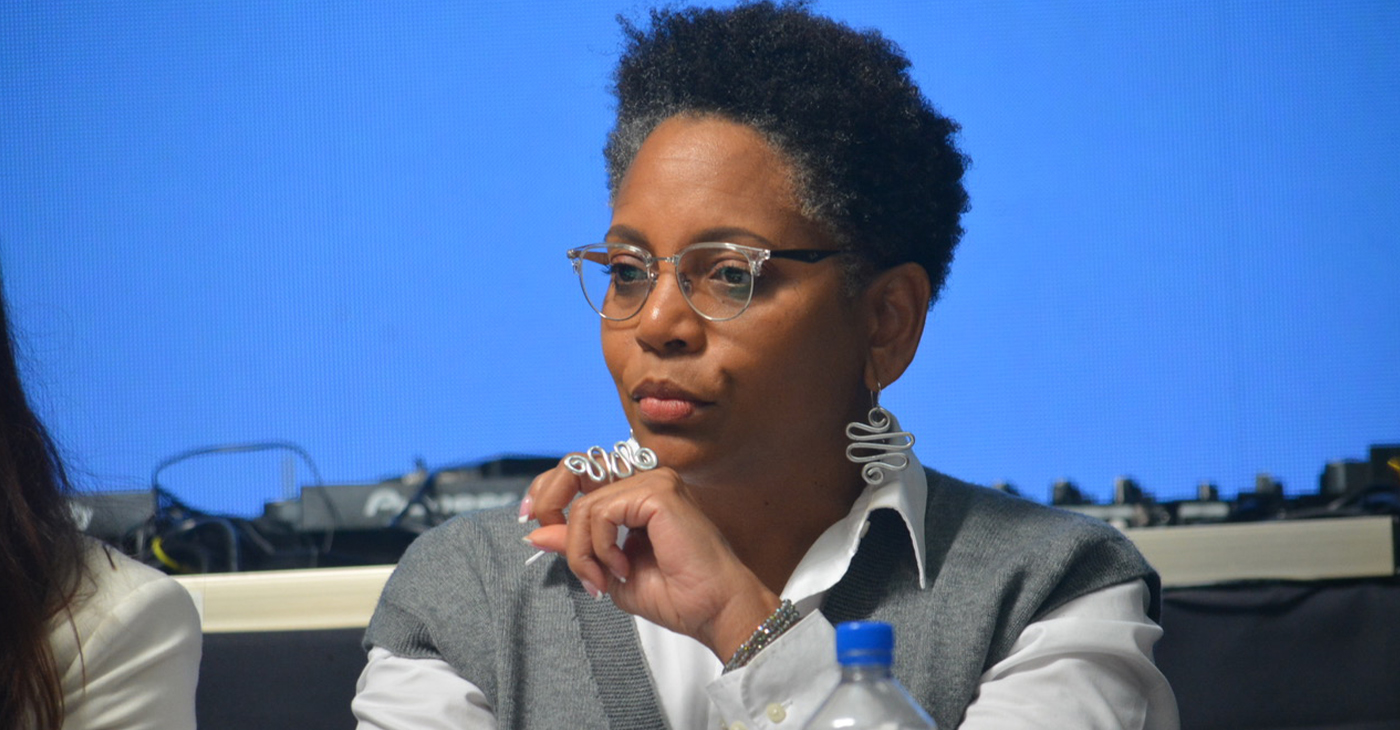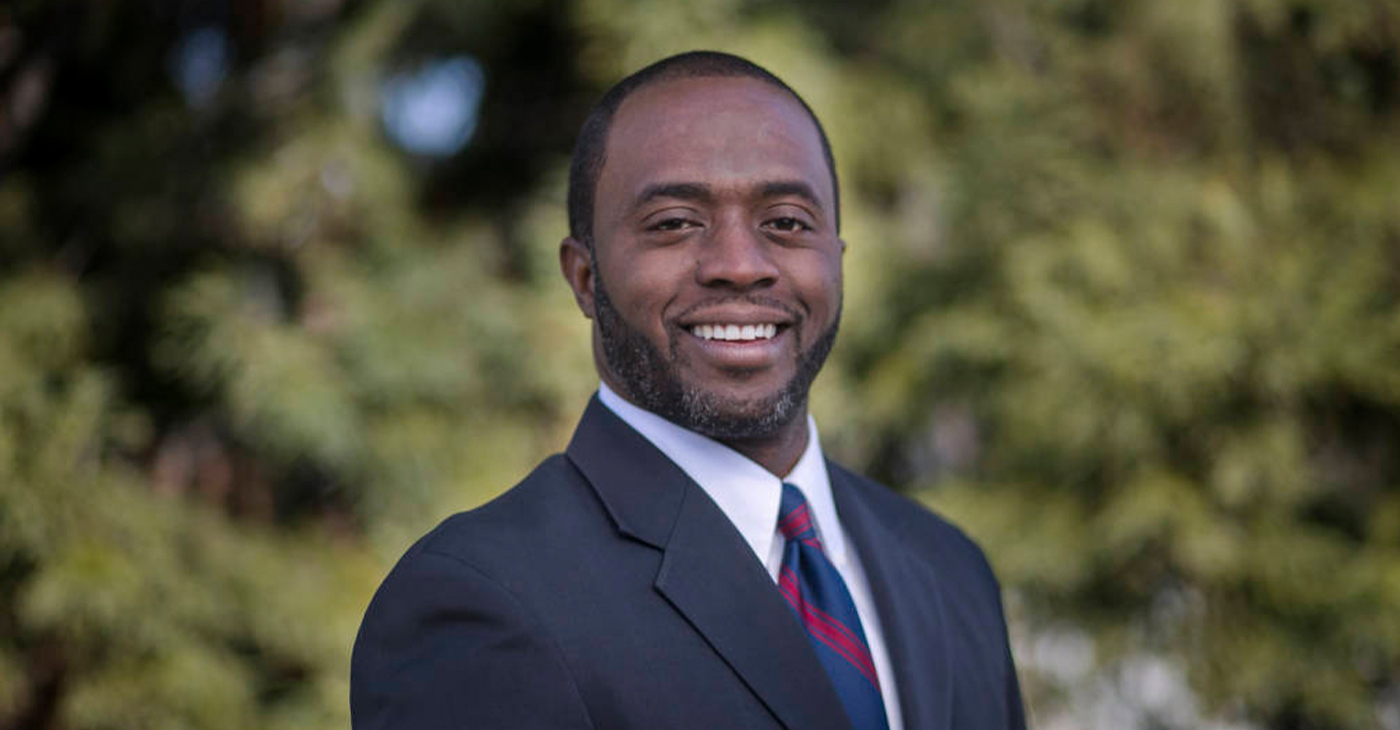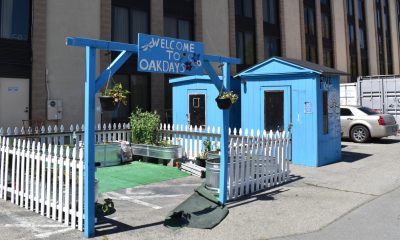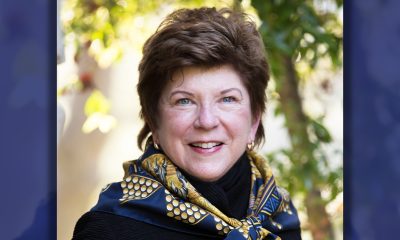California Black Media
Thousands of Black Californians Have Lost Their Health Insurance — Don’t Lose Yours
Five percent of the 225,231 Californians who lost their Medi-Cal coverage in June were African American. According to numbers from the California Department of Health Care Services (DHCS), around 14,000 Black Californians lost health insurance with the state’s safety net health care exchange because they didn’t turn in the required renewal paperwork to continue their Medi-Cal enrollment or their coverage was switched to the state’s insurance provider, Covered California.

By McKenzie Jackson
California Black Media
Five percent of the 225,231 Californians who lost their Medi-Cal coverage in June were African American.
According to numbers from the California Department of Health Care Services (DHCS), around 14,000 Black Californians lost health insurance with the state’s safety net health care exchange because they didn’t turn in the required renewal paperwork to continue their Medi-Cal enrollment or their coverage was switched to the state’s insurance provider, Covered California.
Mayra Alvarez, president of The Children’s Partnership, a Los Angeles-based organization that advocates for affordable health care service for families, said it is important for minorities to have health insurance.
“Especially, as we come out of this public health emergency that has disproportionately hit communities of color, we know health coverage is important to our families and livelihoods,” Alvarez said referencing the COVID-19 pandemic.
Medi-Cal is California’s version of the Medicaid program, which offers free or low-cost health care access to low-income people across the nation.
Alvarez and other California officials and advocates were speaking during an online video news conference last week organized by California Black Media and Ethnic Media Services.
The eligibility of 18 million Californians who are enrolled in Medi-Cal will be reviewed by the DHCS for the first time since 2020. As a result, between this summer and next spring, state officials estimate that 1.8 million to 2.8 million people could lose their Medi-Cal coverage.
To help Californians keep their insurance, DCHS has created a number of easy-to-navigate resources that state residents can access online. The state is also partnering with Community Based Organizations (CBOs) already connected to people in cities and towns across California to help educate the public through a bilingual campaign informing people about how they can prevent losing their health care coverage.
The Medi-Cal eligibility redetermination process, which officials call the “great unwinding,” is part of a massive undertaking taking place in every state to find out who qualifies for Medicaid.
A single Californian making $20,121 or less annually is eligible for Medi-Cal. In the past, participants had to prove their eligibility each year, but in March 2020 Congress suspended the income-verification requirement for Medicaid to make sure people had health insurance during the pandemic.
Those protections expired in March. The federal government has projected that 15 million Americans will lose their health insurance during the nationwide renewal process due to procedural reasons or excess income.
California’s DHCS began verifying the eligibility of Medi-Cal enrollees two months ago.
DHCS Assistant Deputy Director of Health Care Benefits and Eligibility Yingjia Huang said over one million Medi-Cal users had their eligibility reviewed in June. She expects that trend to continue monthly as batches of people come up for renewal until the end of the redetermination process in May 2024.
DHCS has an automatic renewal system for Medi-Cal users whose income the state can confirm on its own. The department is notifying people that they will receive a renewal packet in the mail via text, phone calls, and email.
Huang said individuals lost their Medi-Cal service either because they didn’t complete the renewal paperwork and return it to a county DHCS office by the June 30 deadline or they had an increase in income that allowed DHCS to move their coverage to an affordable health plan with Covered California.
Residents whose coverage was transitioned to Covered California are notified and able to review their new health plan, according to Covered California CEO Jessica Altman.
“California is well-positioned to help consumers through this process and help them keep coverage,” she noted.
Participants who were removed from Medi-Cal’s rolls but are still eligible for the service have until Sept. 30 to get their insurance reinstated. To do so, they must complete the renewal packet and return it to a DHCS office.
DCHS is advising all Californians to take the following steps: update their contact information online; check for mail from their county health office; create or check their online accounts; and complete their renewal forms (if they receive one in the mail).
DHCS and its partners, Huang stated, are committed to helping people maintain health insurance.
“Please be sure you are looking out for the yellow envelope and renewal packet,” she said. “We really hope we continue to keep our members on coverage.”
Community Clinic Association of Los Angeles County CEO and President Louise McCarthy said 64% of the 1.9 million Los Angeles County residents that visit CCALAC locations for health services are Medi-Cal enrollees. They can receive help completing the renewal forms at any of the 113 centers, McCarthy explained.
“A number of folks are letting that yellow packet slide,” she said. “If you haven’t seen the packet, reach out, and we will help you navigate the system.”
There were also 53,836 newly enrolled Medi-Cal participants in June, according to DHCS figures.
Alvarez, the president of The Children’s Partnership, said no one needs to lose their access to health care during the redetermination process.
“People are falling through the cracks,” she said. Keeping people enrolled, Alvarez added is “an all hands-on-deck effort.”
For more information on renewing your health insurance, visit DCHS online.
For individuals who receive Social Security Insurance benefits and don’t have online access, call, 1-800-772-1213 or contact your local Social Security office.
California Black Media
Cinco De Mayo: Five Interesting Facts You Should Know About the Popular Mexican American Holiday
To explore the historical significance of Cinco De Mayo, we step back to the origins of the commemoration, share how some Mexican American Californians regard it and trace how it has morphed into the celebrations we see today.

By Edward Henderson, California Black Media
To explore the historical significance of Cinco De Mayo, we step back to the origins of the commemoration, share how some Mexican American Californians regard it and trace how it has morphed into the celebrations we see today.
Celebrations in the United States began in 1862 in Columbia, California, a small town located in the foothills of the Sierra Nevada in Tolumne County, according to that town’s website.
Today, millions of Americans celebrate Cinco De Mayo annually with 120 official celebrations organized across the United States.
This day has become a cultural point of pride for Mexican Americans and other Latino communities in the United States. It serves as a time to affirm and celebrate their cultures with other Americans of all backgrounds as they highlight their contributions to American history and society.
Joseph Soltero, a Mexican American living in Escondido, shared his perspective on Cinco de Mayo with California Black Media. He learned about Cinco De Mayo from his grandfather and talked about the extent to which his family and San Diego County community celebrate the holiday.
“We knew September 16 was really Mexican Independence Day, but kids in my school would always mistake Cinco De Mayo as our Independence Day. [Cinco De Mayo] is not really even a Mexican holiday,” said Soltero. “It’s something people do to have an excuse to buy drinks, have fun and spend a little money at taco shops.”
Like Soltero, many Mexican Americans (and other Latino Californians) do not take the support and solidarity they receive from people of other races on Cinco De Mayo for granted. They also appreciate when people take the time to learn about the cultural significance of the day and avoid some of the cultural tropes that can easily whisper undertones of racism.
To help raise your awareness about the origins and cultural significance of the day, here are 5 little known facts about Cinco De Mayo:
- Cinco De Mayo is not Mexican Independence Day. It is the anniversary of the Battle of Puebla. This military victory on May 5, 1862, over the French forces of Napoleon III was hailed as a symbol for Mexican resistance to foreign influence.
- The holiday was not given much historical significance outside of Puebla, and it has not been celebrated on a large scale in Mexico. However, during the Civil War, Mexican Americans in California, Oregon and Nevada who supported the Union drew inspiration from the victory over the French-backed Confederate forces.
- The Chicano civil rights movement in the 1940s gave a new energy to celebration of the holiday in the United Sates as a symbol of national pride.
- In the 1980s and 1990s, beer companies’ marketing strategies targeted Mexican Americans by encouraging them to celebrate their heritage – and Cinco De Mayo –with Coronas, Bud Light, and Dos Equis. This created the perceived connection between Cinco De Mayo, alcohol, and merrymaking.
- Los Angeles hosts the largest Cinco De Mayo celebration in the country.
As we join Mexican American Californians to celebrate Cinco De Mayo next week, let’s deepen our cultural understanding.
Let’s use this occasion to commit to learning more about our neighbors, colleagues and friends of other races and ethnicities.
This resource is supported in whole or in part by funding provided by the State of California, administered by the California State Library in partnership with the California Department of Social Services and the California Commission on Asian and Pacific Islander American Affairs as part of the Stop the Hate program. To report a hate incident or hate crime and get support, go to CA vs Hate.
Antonio Ray Harvey
Working Group: More Entry-Level Homes Could Help Solve Housing Crisis
The Community Housing Working Group hosted a briefing on April 23 at Cafeteria 15L in Sacramento. Discussions focused on how the housing crisis in California affects Black and Brown communities and explored ways to provide low-income families and individuals with affordable housing.

By Antonio Ray Harvey, California Black Media
The Community Housing Working Group hosted a briefing on April 23 at Cafeteria 15L in Sacramento. Discussions focused on how the housing crisis in California affects Black and Brown communities and explored ways to provide low-income families and individuals with affordable housing.
Tia Boatman Patterson, CEO and President of the California Communities Reinvestment Corporation, said “entry-level housing” is not available as it was in the past, adding that affordable units were a major point of entry into homeownership for many families in the Black community.
“My mother bought her first house when I was in junior high. It was an 850-square foot, two-bedroom and one-bathroom house in 1978. That house cost $30,000,” Boatman-Patterson said.
“A woman working part-time at JCPenney was able to afford that house. We don’t build these types of housing now. We do not build entry-level homeownership,” she added.
The Community Housing Working Group is a collection of diverse community organizations from across California working together to address housing challenges in their communities. The organization believes that solving the affordable housing crisis will require creating enough smaller, lower-cost, multi-family homes located near jobs, transit, and good schools.
The briefing included a panel discussion titled, “Exclusionary Zoning: A Look Back and a Path Forward.” Boatman-Patterson participated in that session along with Henry “Hank” Levy, Treasurer-Tax Collector for Alameda County, and Noerena Limón, consultant, Unidos U.S., and Board Member of California Housing Finance Agency.
Boatman-Patterson, a former Associate Director for Housing, Treasury and Commerce in the Office of Management and Budget for the Biden Administration, started her presentation by highlighting how exclusionary single-family zoning is contributing to continued segregation of California communities.
She said that single-family zoning originated in the Bay Area city of Berkeley in 1916.
“By creating single-family zoning and having fenced-off communities, you were able to exclude the ‘others,’” Boatman-Patterson said. “It really was a method to exclude — what they called ‘economic segregation’ — but that was a guise for racial segregation. Single-family zoning, along with redlining, became a systemic approach to exclude based on affordability.”
Title VIII of the federal Civil Rights Act of 1968 — commonly known as the Fair Housing Act of 1968 – is the U.S. federal legislation that protects individuals and families from discrimination in the sale, rental, and financing of housing. It was passed to open the doors to affordable housing.
In 1968, 65.9% of White families were homeowners, a rate that was 25% higher than the 41.1% of Black families that owned their homes, according to National Low-Income Housing Coalition. Today, those figures have hardly changed in the Black community, although White homeownership has increased five percentage points to 71.1%.
Boatman Patterson said the rate has not changed in Black and Brown communities because financing for affordable entry-level homes is almost nonexistent. The homeownership disparities contribute to the disturbing racial wealth gap in the nation, according to the National Low-Income Housing Coalition’s October 2018 report.
“We really must align the financing with the actual building of units, which we haven’t necessarily done. Because of this misalignment, I think we continue to see problems,” Boatman-Patterson said.
California Black Media
State Ed Chief Tony Thurmond Pushes Bill to Train Educators
State Superintendent of Public Instruction (SSPI) Tony Thurmond is advocating for comprehensive training for teachers in reading and math, emphasizing the urgent need to improve student academic outcomes across California. On April 24, during testimony in the Senate Education Committee, Thurmond backed Senate Bill (SB)1115, which aims to provide evidence-backed educator training. The committee passed the bill with a 7-0 vote.

By California Black Media
State Superintendent of Public Instruction (SSPI) Tony Thurmond is advocating for comprehensive training for teachers in reading and math, emphasizing the urgent need to improve student academic outcomes across California.
On April 24, during testimony in the Senate Education Committee, Thurmond backed Senate Bill (SB)1115, which aims to provide evidence-backed educator training. The committee passed the bill with a 7-0 vote.
Thurmond pointed out to the committee that existing funding for educator training in literacy and math only covers about one-third of California’s educator workforce. SB 1115, Thurmond said, would fund the remaining two-thirds.
“This is an issue of moral clarity,” according to Thurmond. “In the fifth-largest economy in the world, and in an age when we have access to substantial brain science about how students learn, it should be unacceptable to train only some educators in the best strategies to teach essential skills.”
SB 1115 incorporates multiple research-backed methods, including phonics, and it aligns with the California ELA/ELD Framework, which encourages biliteracy and multilingualism.
Thurmond emphasized the moral imperative behind the push for enhanced training by noting that 70% of incarcerated adults struggle with reading or are illiterate.
“Every child should feel supported as they learn to read and every teacher should feel confident in their ability to support students’ foundational literacy,” Thurmond said. “SB 1115 is about ensuring that all children have the opportunity to read by third grade, and that all children have a shot at the life-changing outcomes that come from early literacy.”
The next step for SB 1115 is a hearing in the Senate Appropriations Committee on May 6.
-

 Community3 weeks ago
Community3 weeks agoFinancial Assistance Bill for Descendants of Enslaved Persons to Help Them Purchase, Own, or Maintain a Home
-

 Business3 weeks ago
Business3 weeks agoV.P. Kamala Harris: Americans With Criminal Records Will Soon Be Eligible for SBA Loans
-

 Activism3 weeks ago
Activism3 weeks agoOakland Post: Week of April 10 – 16, 2024
-

 Community3 weeks ago
Community3 weeks agoAG Bonta Says Oakland School Leaders Should Comply with State Laws to Avoid ‘Disparate Harm’ When Closing or Merging Schools
-

 Community2 weeks ago
Community2 weeks agoRichmond Nonprofit Helps Ex-Felons Get Back on Their Feet
-

 Community2 weeks ago
Community2 weeks agoOakland WNBA Player to be Inducted Into Hall of Fame
-

 Community2 weeks ago
Community2 weeks agoRPAL to Rename Technology Center for Retired Police Captain Arthur Lee Johnson
-

 Activism1 week ago
Activism1 week agoOakland Post: Week of April 24 – 30, 2024
























































